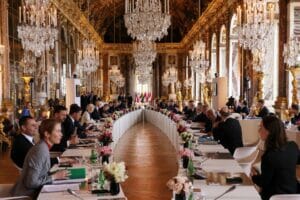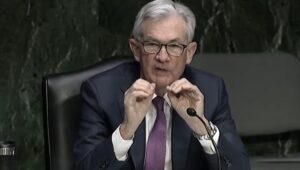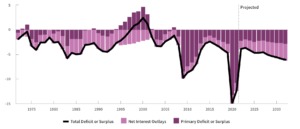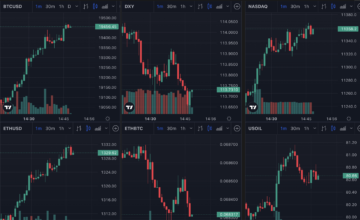The President of Ukraine, Volodymyr Zelensky, visited Silicon Valley last Friday (Sep 3) after meeting US President Joe Biden and others in Washington.
There he met with representatives of the Stellar Development Foundation (pictured), with the latter publicly stating:
“Today we welcomed Ukrainian President Volodymyr Zelensky to Silicon Valley and discussed SDF’s ongoing support for Ukraine’s digital economy.
We commend Ukraine’s forward-looking leadership and commitment to delivering digital transformation by leveraging blockchain. Onward!”
Stellar has been selected to help develop Ukraine’s central bank digital currency (CBDC) with the foundation asked to open a Research and Development Center in Ukraine.
The NATO bordering country has also just passed a law on legalizing cryptos by bringing them within a regulatory framework, a law that has been received positively by the industry.
“Regulatory clarity for crypto is undoubtedly bullish for the space. Thanks Ukraine!” – Changpeng Zhao, Binance’s CEO, publicly said.
Ukraine has a GDP of $155 billion for its 44 million population, making it a middle income country. It has been growing at about 3%-4%, but with a very high inflation rate of about 10% while the base interest rate is at 8.5%.
It is the only country in Europe to see war in our time, and that obviously has put some pressure especially where their own money, hryvnia (UAH) is concerned.
It halved in value in 2016, and has not recovered since, with this presumably being the biggest problem for the country after its own security.

This has led to a considerable level of bitcoin adoption, with Ukrainian officials known to hold 45,000 bitcoins, worth $2 billion or more than 1% of their GDP.
The recent law therefore passed with nearly unanimous consent in parliament, but it’s not clear just what crypto skill levels the country has considering the president’s choice to meet particular crypto representatives.
Ukraine and Russia was once one country, so while there are considerable political differences, economically there may not be much.
Russia’s President Vladimir Putin was ‘ill’ with blockchain back in 2017, but what we speculate came out of it was a now failed attempt to get an oil-backed Petro token running and suggestions of an oil one or gold one in Iran which was never launched.
Venezuela never changed their strategy as far as we are aware, with their crypto experiment at the state level ending at Petro, at least for now.
Iran fairly quickly shifted for a government bureaucracy with it now appearing to have a bitcoin strategy that has evolved to allowing their banks to hold bitcoin ostensibly for imports. A move that, out of necessity, is forcing some aspect of their finance to upgrade which may shelter the country to some extent from shocks.
For Ukraine, the suggestion is this CBDC which is more likely than not to be a dead end because it may amount to effectively a national intranet compared to the global bitcoin or eth or some other crypto that at the minimum can be forked, by anyone. Something that neither Stellar nor XRP has illustrated because they both require some permission.
As far as we are concerned, the debate on ‘proper’ CBDCs was ended by Sweden and then the Swiss referendum, with it probable that only Sweden can pull it off as the first country to launch a ‘proper’ CBDC because they appear to be fully aware of all the implications, both technical and otherwise.
While for a country like Ukraine, they’re clearly not in a position to reinvent the wheel when inflation is biting. They’d get more curiosity by doing something like adding bitcoin to their official reserves so as to hedge against gold, which may come under pressure from the new gold, as well as to have a far more mobile means of storing value if the unthinkable does happen and Kyiv falls.
Some of its citizens clearly appear to be doing as much, hedging with a global currency, so the second biggest investment they can do currently is probably grants – either in cash or through free office space and so on – to increase crypto skills especially in solidity programming.
A crypto ‘army’ in short of civilian ‘shadow’ supercoders that learn not just what all of this is, but also how to build what the market wants, the global market.
Some of that is probably happening organically, but Europe should learn from how Russia has harnessed the asymmetry of code ‘power,’ and should get ahead in doing so for ‘crypto’ power where the asymmetry is even greater, by encouraging some of their top talent to Solidity or crypto through tax incentives or grants as they do for Research and Development more widely.
Source: https://www.trustnodes.com/2021/09/10/ukrainian-president-meets-crypto-representatives
- 000
- 2016
- Adoption
- All
- Allowing
- Bank
- Banks
- biden
- Biggest
- Billion
- Bitcoin
- bitcoin adoption
- blockchain
- build
- Bullish
- Cash
- CBDC
- CBDCs
- Central Bank
- central bank digital currency
- ceo
- Changpeng
- Changpeng Zhao
- code
- consent
- crypto
- Currency
- dead
- debate
- delivering
- develop
- Development
- digital
- digital currency
- Digital economy
- Digital Transformation
- economy
- ETH
- Europe
- experiment
- finance
- First
- Foundation
- Framework
- Free
- Friday
- GDP
- Global
- Gold
- Government
- grants
- Growing
- High
- hold
- How
- How To
- HTTPS
- Income
- Increase
- industry
- inflation
- interest
- investment
- Iran
- IT
- Joe Biden
- launch
- Law
- Leadership
- LEARN
- Led
- Level
- Making
- Market
- million
- Mobile
- money
- move
- official
- Oil
- open
- Other
- Petro
- population
- power
- president
- pressure
- Programming
- research
- research and development
- running
- Russia
- security
- selected
- Shelter
- Short
- Silicon Valley
- skills
- So
- solidity
- Space
- State
- Stellar
- Strategy
- support
- Sweden
- Swiss
- Talent
- tax
- Technical
- time
- token
- top
- Transformation
- Ukraine
- us
- value
- Vladimir Putin
- war
- washington
- Wheel
- within
- worth
- xrp












